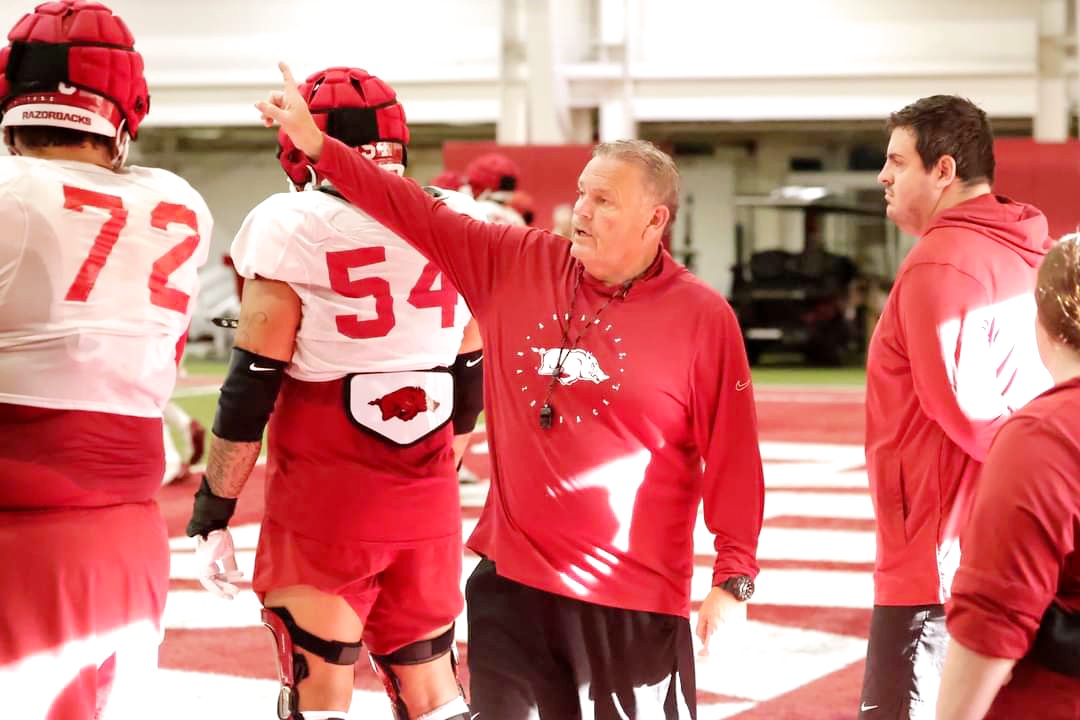
NIL: Right or wrong there is a need for an upgrade?
on 2024-05-14 07:31 AM
By Jerry Meadows
FAYETTEVILLE — Years ago, college athletes were not allowed to be compensated for playing sports because they were considered amateur athletes.
It was understood that paying an amateur athlete would disqualify his amateur status because any compensation for their services would make them a professional athlete. However, universities benefitted from the games their athletes competed in. For decades this arrangement would be debated. So, rather than pay an athlete for what they did, the creation of the NIL would pay them for who they were. An athlete’s name, image, and likeness would become a commodity for the athlete. This would become the loophole for maintaining an athlete’s status as an amateur while being compensated monetarily.
Had the NIL solved this dilemma facing college athletes? Can we now see that the NIL has been good for college sports in general? Or are there major concerns within this ill-conceived system?
Let’s take a serious look at this balancing act that appears to be headed for a colossal failure in the not too distance future if not corrected. Let me preface first that the NCAA has tried to implement uniform rules since launching its initial NIL policy in June 2021, but any authority the NCAA has appears to be on shaky ground. Yet, for the sovereignty of the universities and athletes, guidelines must be determined to preserve fairness and equal opportunity.
1. First and foremost, is the financial well-being for our young athletes being protected? Who is looking out for these athlete’s financial future? What type of financial education is provided to guide these young men and women when they suddenly have more money than they know what to do with? Spend It? Who warns them about those who want to get their piece of an athlete’s financial earnings? What are the dangers, if any, to an athlete who suddenly has $100,000 to $1,000,000 in his or her bank account? Do 19-year-olds understand the consequences of spending as compared to the benefits of saving? Can or should universities become proactive in educating and training these athletes in the world of financial accountability? They don’t need agents at this point. That is just another extended hand reaching into the financial pie of amateur athletes. Universities need to provide a service that helps these young people to learn how to live with excess in their bank account. Money has a voice and the first thing money says is, “You deserve to reward yourself. Go ahead and buy that new Corvette. You can now afford it.” Should something be done to attempt to curb excess spending by an athlete? If there are no restraints in spending what will these young men and women do with such large sums of money?
2. Right now, NIL contracts appear to be yearly for those in the portal. But what about high school seniors? Should their first contract be for four years? For instance; if an athlete is offered a $400,000 NIL package, will they be paid the entire $400,000 or would it be based upon each year they remain at the university as they compete in the sport they are being compensated?
3. Is the compensation to an athlete contingent upon them finishing the season? Being paid after the season from an interest-bearing account from their NIL could show them the gift of compound interest.
4. Has an equal maximum compensation been determined for athletes in each sport in the NCAA? Will elite athletes in football & basketball be paid the same as elite athletes in baseball, golf, gymnastics, hockey, soccer, swimming, tennis, and track & field just to mention a few? If not, could this become an equality issue? Or is this even practical?
5. Should or can the courts establish a “NIL Compensation Cap” for each sport based upon the number of scholarships available or should there be? Should basketball players benefit more financially than football players because basketball has fewer players? Again, the equality issue.
6. Will there be a “NIL Compensation Cap” for each college, or each sport? Will colleges like Alabama, Ohio State, Texas, Michigan, USC, and Oregon become like the Los Angeles Dodgers and the New York Yankees in baseball? How will schools like Northwestern, TCU, SMU, North Carolina State, Minnesota and schools like them effectively compete for the best talented players if they can be outbid by schools with a larger NIL reserve?
The bottom line is the NCAA should be able to provide guidelines and rules that provide an equal investment pool for each university. MLB has a salary cap. Why couldn’t the NCAA provide a salary cap for at least high school seniors since their true value on the college level has yet to be established? If something isn’t done soon the world of NIL could be a ticking time bomb waiting to explode while having the fuse already lit.
(Last updated: 2024-05-14 07:31 AM)
